Presidential Palace Hanoi: A Glimpse into Vietnam’s Colonial and Revolutionary History
The Presidential Palace in Hanoi stands as one of Vietnam’s most iconic and historically rich structures. This building, while a symbol of French colonial rule, holds deep connections to the life of Ho Chi Minh—the father of the nation. Let MOTOGO Tours explore this site.
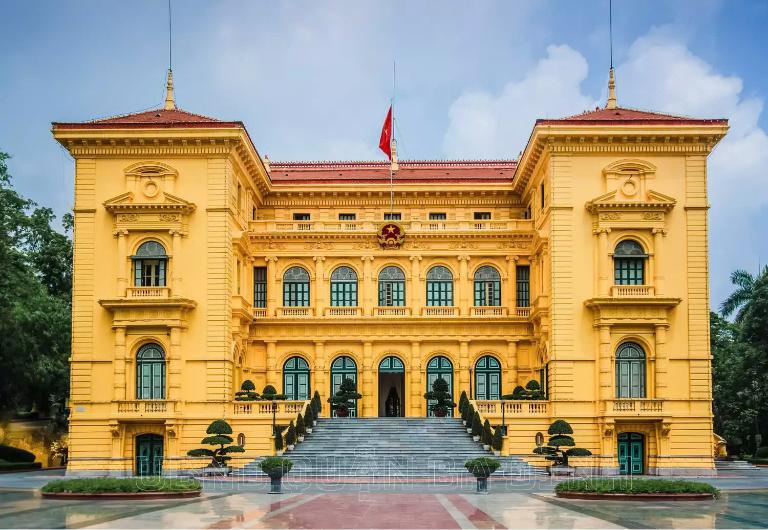
Historical Background of the Presidential Palace
Renowned and rich in history, the Presidential Palace, one ofhistorical landmarks in Hanoi captures Vietnam’s colonial past and path toward independence. This part explores the important events influencing the palace from the vital eras of its past.
Early French Influence
The Presidential Palace’s roots are in the late 19th century, under French colonial control, when Vietnam was Once Vietnam was colonized in the middle of the 1850s, the French aimed to create a strong administrative presence there. This ambition resulted in the erection of a magnificent structure housing the Governor-General of French Indochina.
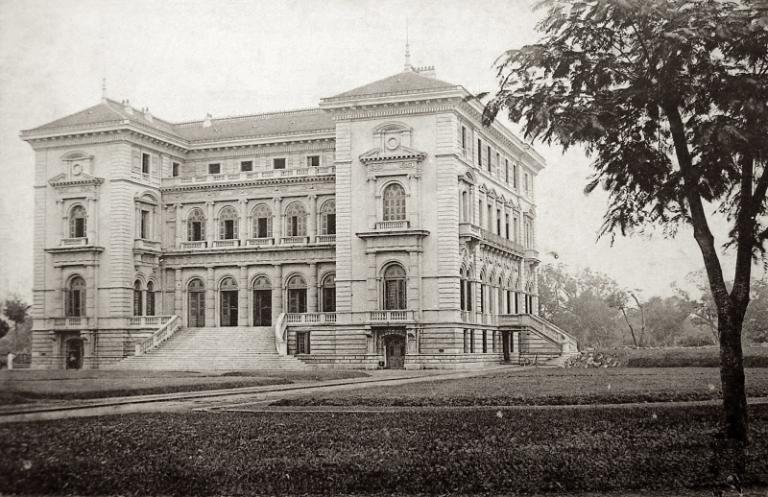
Construction Under French Rule
The Presidential Palace was under building from 1900 until 1906. Commissioned for this enormous project was French architect Auguste Henri Vildieu. Designed in the French neoclassical style, which colonial governments preferred as a symbol of authority and pride, the palace was
With its majestic façade covered with classical columns, towering ceilings, and intricate staircases that radiate luxury and power, the building’s architecture reflects Aiming to reflect warmth and splendor among the rich vegetation of its surrounds, its brilliant yellow exterior was not only a color choice but also an intentional architectural element.
Early on, the Presidential Palace housed the administrative center of the French colonial authority. Here the Governor-General supervised colonial policy, handled affairs of state, and visited officials from France and Vietnam. Emphasizing its relevance in the colonial government structure, the structure became the center of attention for political decisions impacting the life of millions of Vietnamese people.
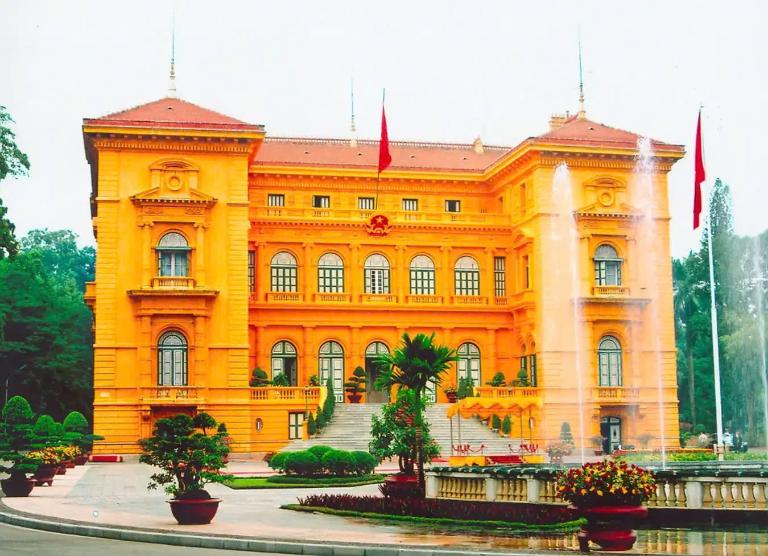
Transition to Vietnamese Control
The turbulent years preceding and after Vietnam’s fight for freedom from French colonial control saw important occurrences at the Presidential Palace. Following the August Revolution spearheaded by the Viet Minh, the palace became a major headquarters for the new Vietnamese government in 1945. President Ho Chi Minh resided and worked from December 19, 1954, till September 2, 1969. Many times, this unique national relic site is likened to a museum presenting President Ho’s life.
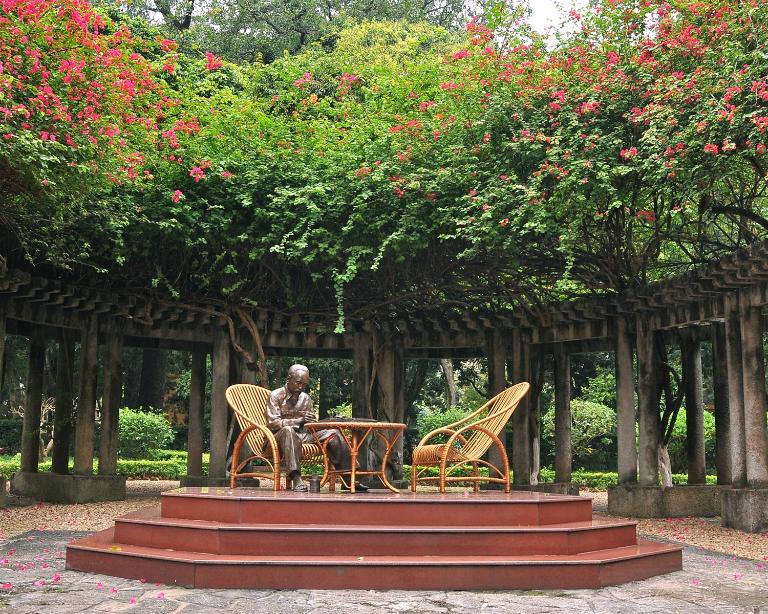
>>> Let’s see more: Explore Hoa Lo Prison: A Dark Chapter of Vietnam War
Architectural Design of the Presidential Palace
The Presidential Palace’s architectural architecture in Hanoi is an amazing fusion of Vietnamese traditional aspects with French colonial beauty. Apart from providing a political and ceremonial space, this magnificent structure conveys a rich narrative of the time it was built.
European Architectural Influence
Built between 1900 and 1906, the Presidential Palace was created under French architect Auguste Henri Vildieu. Characterized by its symmetry, grandeur, and exacting detail, the structure exhibits the fundamental elements of French neoclassical architecture.
A trademark of colonial architecture in Indochina, the palace’s outside is vividly yellow. This color not only captures the era’s fashion but also contrasts strikingly with the verdant surroundings of the gardens, therefore producing visual impact.
Standard components in neoclassical architecture, the construction boasts many tall columns and majestic arches. The palace’s elaborate carvings and moldings highlight the time’s artistic sensibility. From flower designs to mythological animals, the decorative accents mirror local handicap as well as European creative traditions.
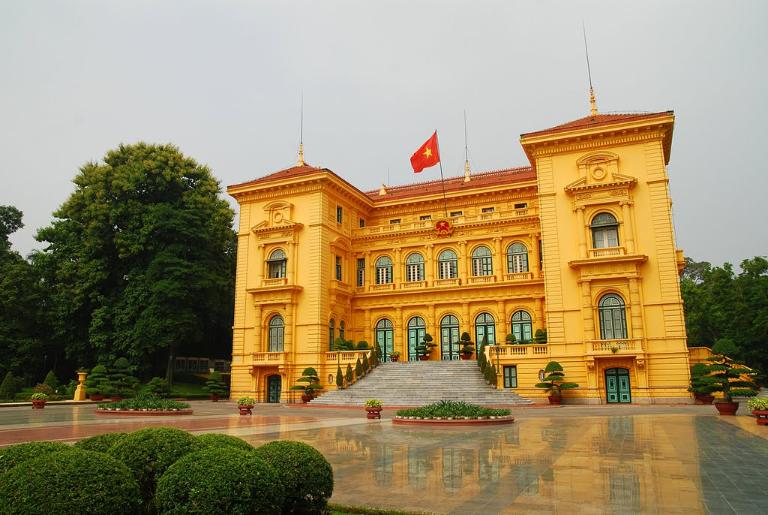
>>Read more: Hanoi Motorbike Tours: A Comprehensive Guide for Travelers
Fusion of French and Vietnamese Styles
Although the main architectural influence is definitely French, the Presidential Palace also features aspects reflecting Vietnamese customs. This blending produces an architectural identity that reflects the cultural interaction between the two influences:
Inspired on traditional Vietnamese architecture, the roof design has upward-curving eaves. This function not only improves the visual attractiveness but also has a practical one since it helps to guide rainwater away from the construction.
Beautifully designed gardens, typical of Vietnamese architecture, ring the palace. Apart from offering a pleasant counterpoint to the grandeur of the construction, the gardens reflect the Vietnamese inclination for nature and highlight indigenous flora, therefore acting as a calm haven.

>>> Explore: St. Joseph’s Cathedral: Hanoi’s Gothic Masterpiece and Cultural Icon
Interior Design and Layout
Comprising large rooms, huge staircases, and magnificent furniture, the inside of the Presidential Palace is as striking as its outside. Visitors are met upon arrival by a great hall with towering ceilings and intricately painted walls. Official banquets and meetings abound in this area, therefore underscoring the palace’s function as a diplomatic venue.
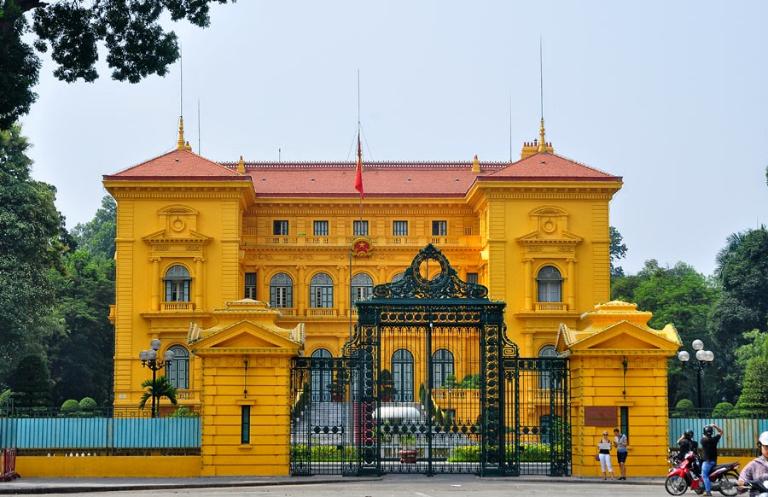
Artwork reflecting Vietnamese culture as well as the French colonial influence grorns the inside. From ornamental themes to paintings of historical personalities, the artwork improves the palace’s storytelling feature. Big windows let lots of natural light flood the inside areas, therefore fostering a friendly environment.
Significance of the Architectural Design
The Presidential Palace’s architectural design accomplishes numerous crucial functions:
- Symbol of Power: The political authority the palace stands for reflects in its majesty. Its grand architecture and sophisticated design exude power, which qualifies for the leaders of Vietnam to live there.
- Cultural Heritage: The design of the palace reflects the complicated historical link between French and Vietnamese styles, which combine to signify It emphasizes Vietnam’s own character and is evidence of the cultural interaction that took place throughout the colonial era.
- Tourist Attraction: As one of the top destinations in Hanoi, the architectural beauty of the Presidential Palace draws tourists from around the world. Its unique design and historical significance make it a key highlight for visitors exploring Vietnam’s capital.
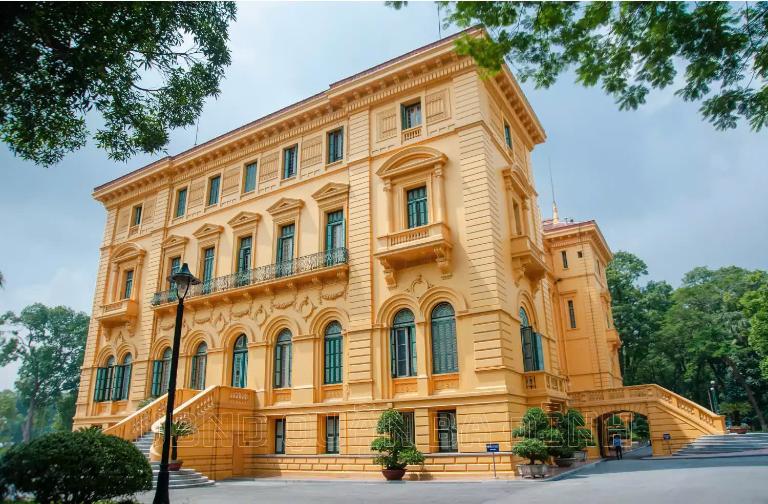
Discover the Treasures Within the Presidential Palace
Apart from the Presidential Palace itself, this ancient complex covering more than 10 hectares presents a fascinating mix of homes, gardens, grasslands, fish ponds, and picturesque walking trails.
1. The Wooden Stilt House
From 1958 to 1969, President Ho Chi Minh lived and worked from this basic yet symbolic wooden stilt house. Built of native Menghundor wood from Vietnam, it features a classic baked clay tile roof. The President worked and slept on the second floor, which had two small 10-square-meter rooms; the first level was utilized as a visitor reception area. The simple furniture of the house reflects the President’s modest and economical way of living.
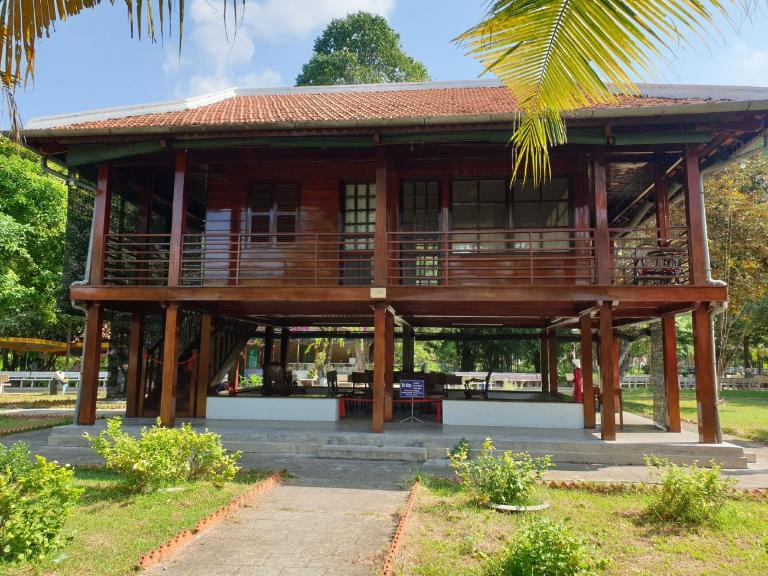
2. House No. 67
Not far beyond the stilt house is House No. 67, a basic, light blue construction where President Ho lived between 1967 and 1969. He spent his last days in his illness in this house as well. Inside guests can see military maps, a ZENITH radio, a little clock by the bed, and a moving wall calendar noting his passing at 9:07 AM on September 2, 1969.
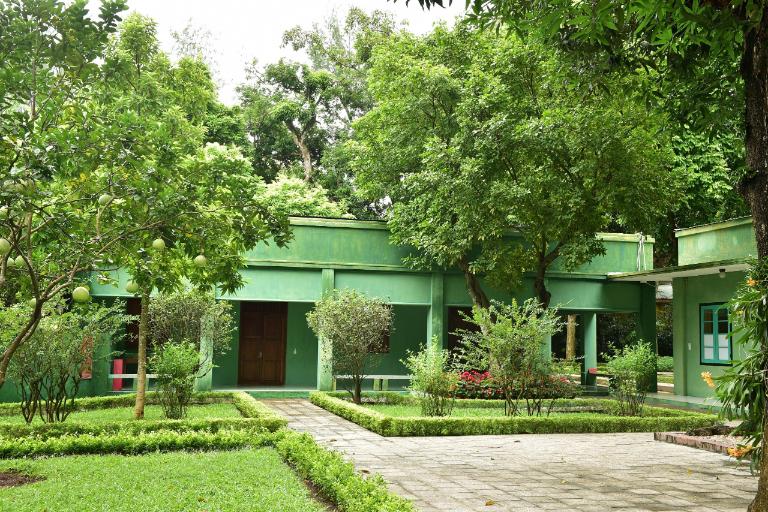
>>> Let’s see more: Hanoi Old Quarter: A Journey Through Time and Culture
3. House No. 54
President Ho resided and worked at House No. 54 from December 1954 to May 1958 before to relocating to the stilt residence. This three-room house boasts a bedroom, a dining room in the middle, and a study close to the pond where he hosted visitors. Along with personal records, books, and treasured mementos from President’s overseas friends, most of the original furniture is still in place.
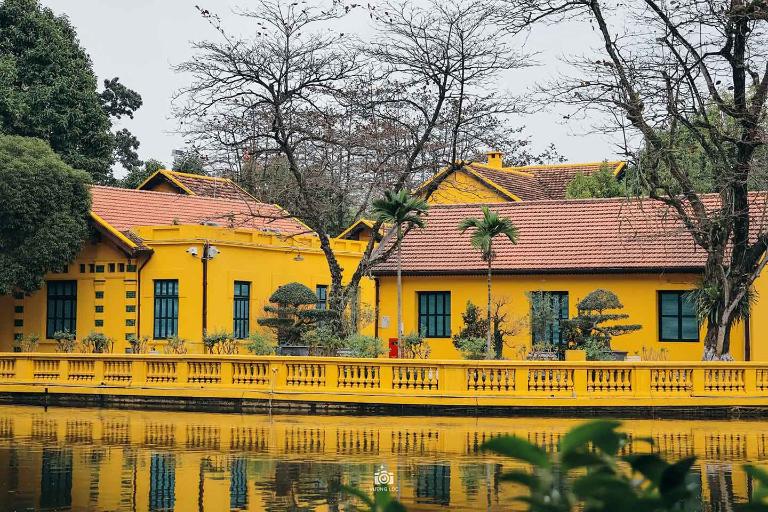
4. Uncle Ho’s Fish Pond
President Ho transformed a nearby muddy pond, covering more than 3,000 square meters with a depth of two meters, into a calm fish pond when he moved into the stilt house in 1958 Along with mussels that produce pearls, it is home to carp and ruffe. The President would spend time feeding the fish every afternoon following work, a custom that has grown to be a valued emblem of his relationship to the natural world.
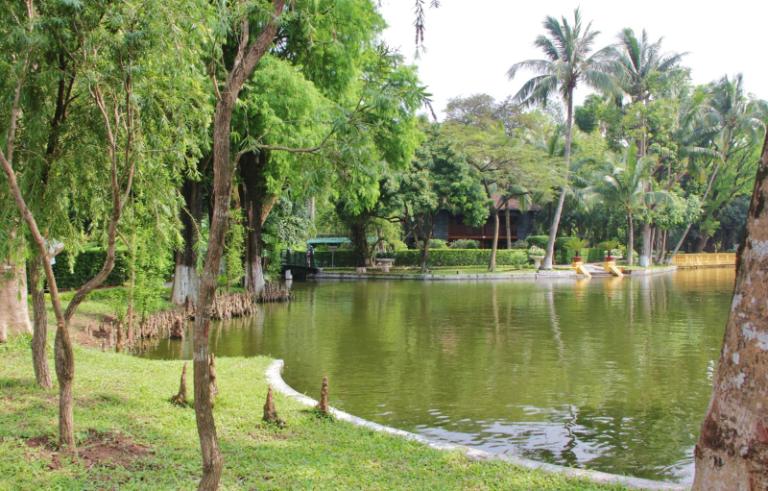
5. Mango Street
Around the complicated is the peaceful 200-meter Mango Street, dotted with mature mango trees. President Ho followed this road for his morning workouts and leisurely walks following business. Mango Street is also historically noteworthy since it hosted several crucial talks between the President and southern delegates during the Second Indochina War.
6. The Botanical Gardens
Covering a vast 65,000 square meters, the verdant Botanical Gardens enhance the serene atmosphere produced by the adjacent fish pond. Scientifically planned to highlight the richness of Vietnam’s ecology, this green sanctuary is home to a great range of trees and plants. Featuring trees donated by nations all around, the gardens also serve as a living tribute to the nation’s foreign friendships.
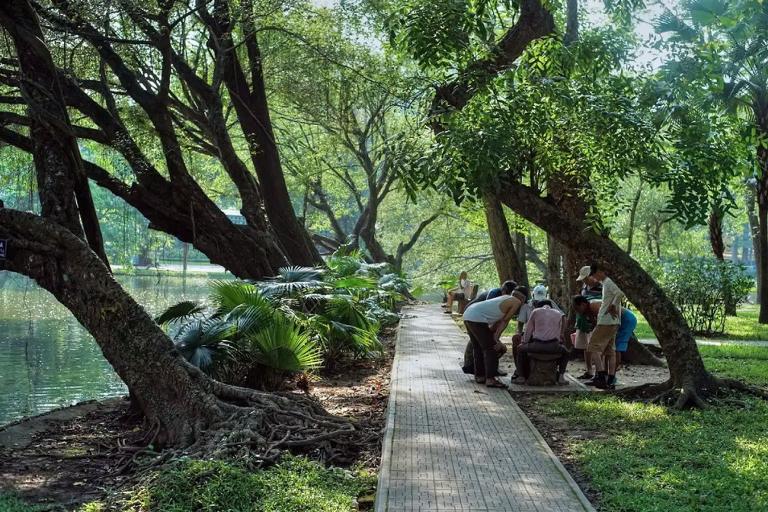
Visiting the Presidential Palace
Making plans for your visit to the Presidential Palace will improve your whole experience. These are some key information points.
Essential information for Tourists
- Location: No. 2, Hung Vuong Street, Ngoc Ha Ward, Ba Dinh District, Hanoi, Vietnam
- Opening Hours: Every day except Monday and Friday afternoons
- Summer (April – October): 7:30 AM – 11 AM and 1:30 PM – 4 PM
- Winter (November – March): 8 AM – 11 AM and 1:30 PM – 4 PM
- Entrance Fee:
- Free for Vietnamese visitors
- 40,000 VND/ticket for foreign visitors
The Presidential Palace, which lies in the center of Hanoi, is conveniently reachable by taxi, motorbike, or even walking from several angles. Public buses passing the area are 09, 22, 45, and 50 as well. In your journey to the capital city, in addition to the Presidential Palace, you should also explore other tourist attractions, such as Hoan Kiem Lake, Ho Chi Minh Mausoleum, Hanoi Old Quarter,…
Tips for Tourists
To learn more about the history and relevance of the Palace, think about signing up for a guided tour while on visit. Remember your camera as well; the amazing buildings and gardens offer lots of pictures chances!
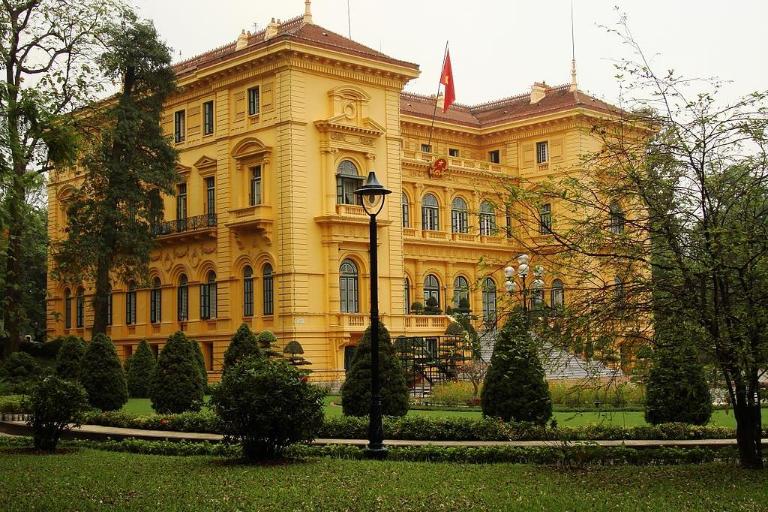
The Presidential Palace is evidence of Vietnam’s rich past and cultural development. Whether your interests are architecture, history, or just tourism, the Palace provides a special window into the core of Vietnam’s political scene and its active culture.
Related Posts:
- Dong Xuan Market: Hanoi’s Vibrant Cultural and Shopping Hub
- Co Loa Citadel in Hanoi: A Glimpse into Vietnam’s Ancient Past
- Phung Hung Mural Street: A Vibrant Tapestry of Art and Culture in Hanoi
- Hanoi Ceramic Mosaic Mural: A Masterpiece of Art & Culture
- Perfume Pagoda in Hanoi: Ultimate Guide to Vietnam’s Spiritual Haven








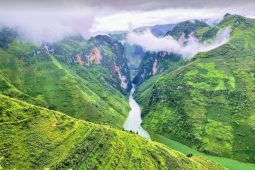
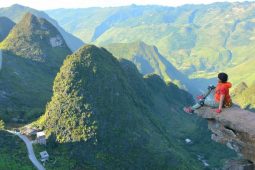
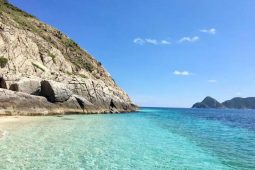

Be the first to comment!